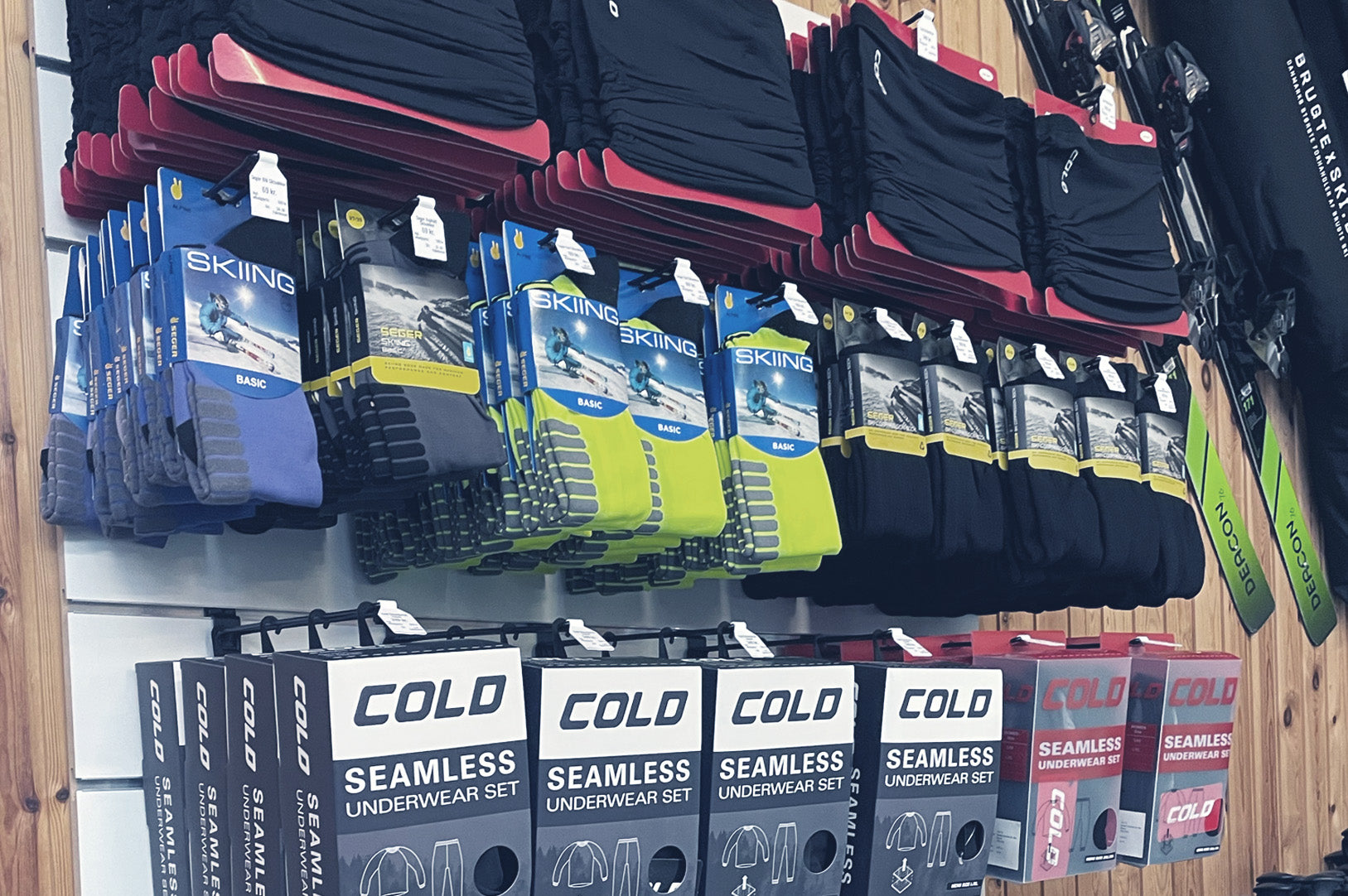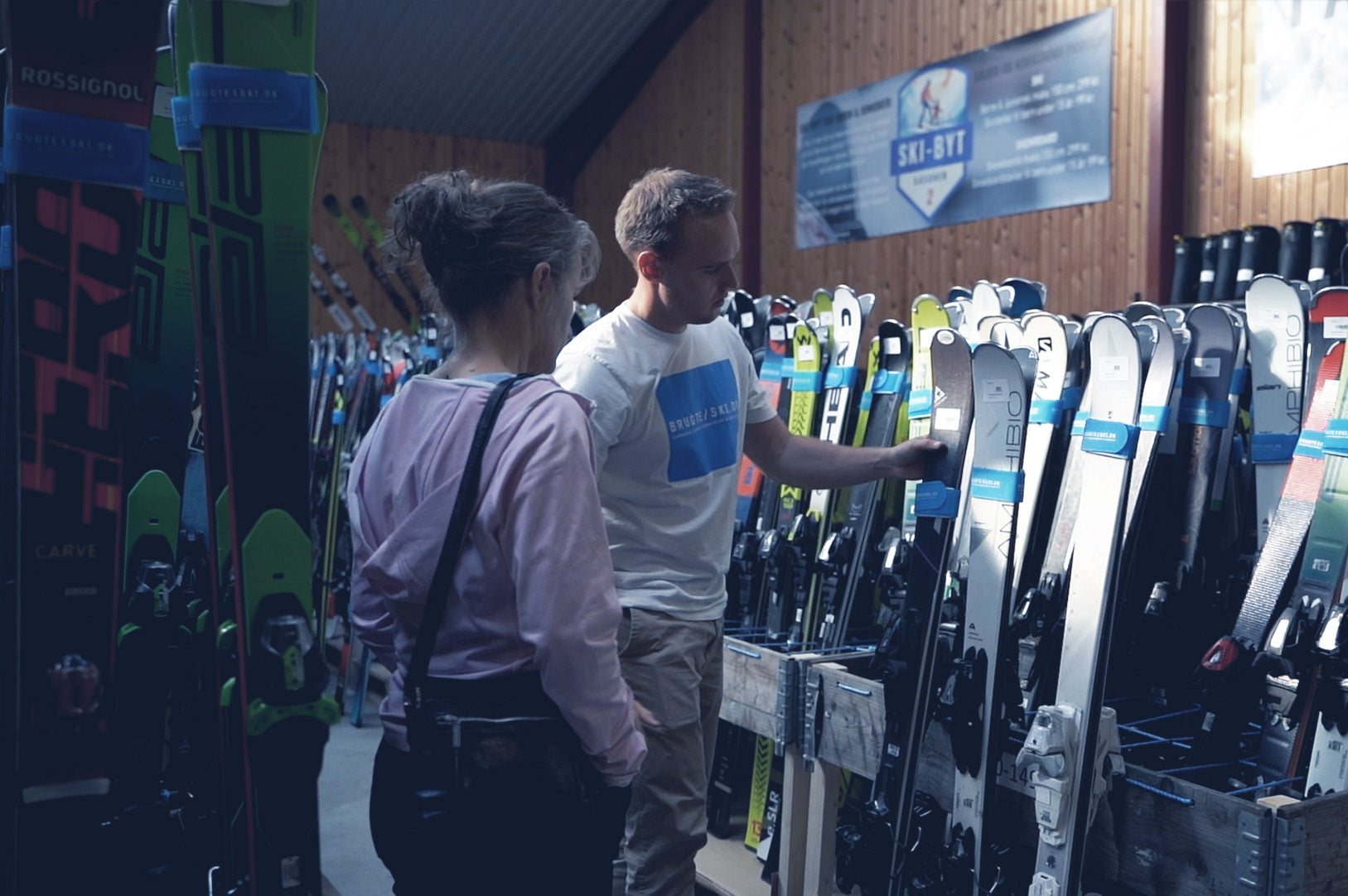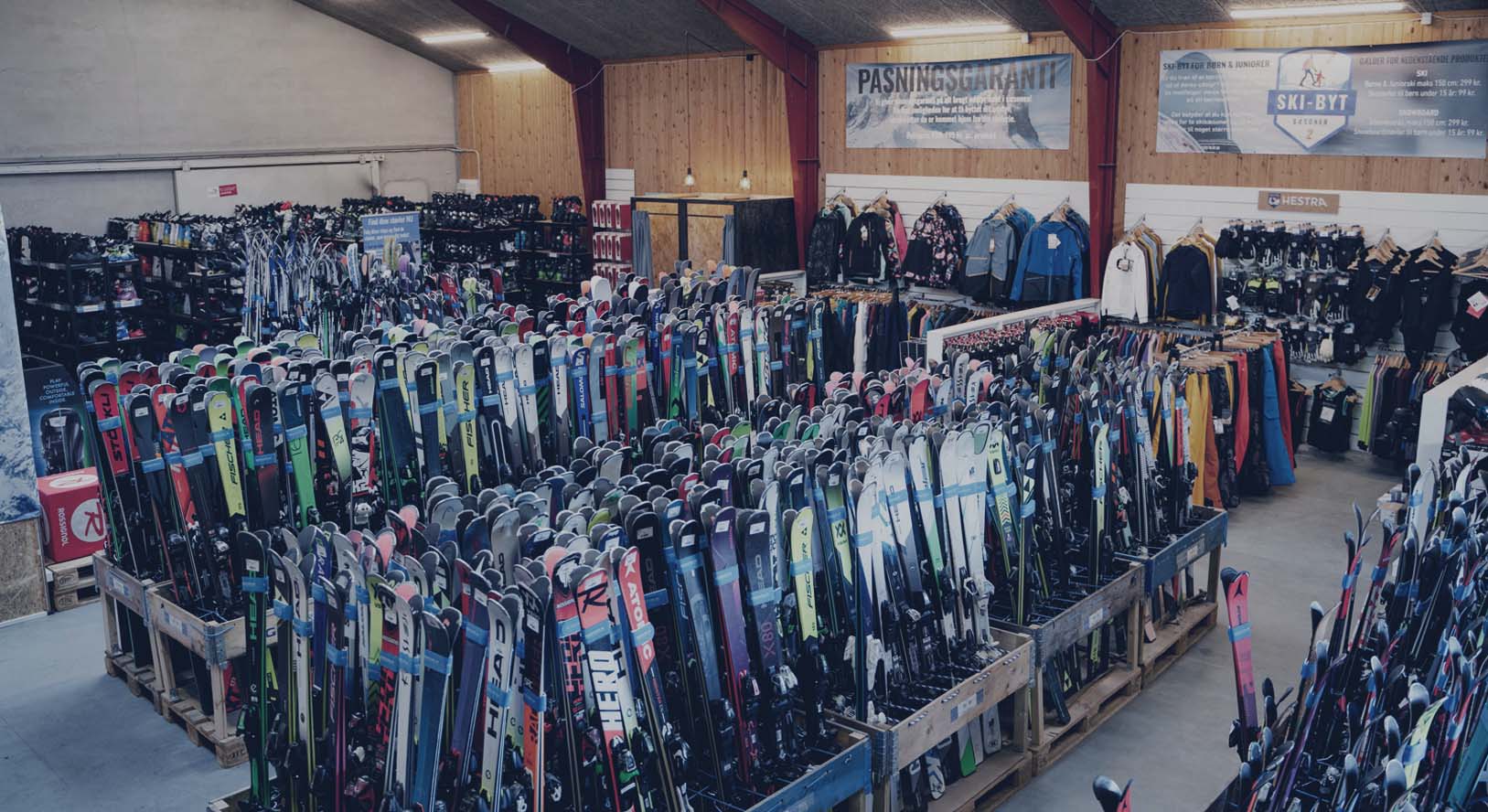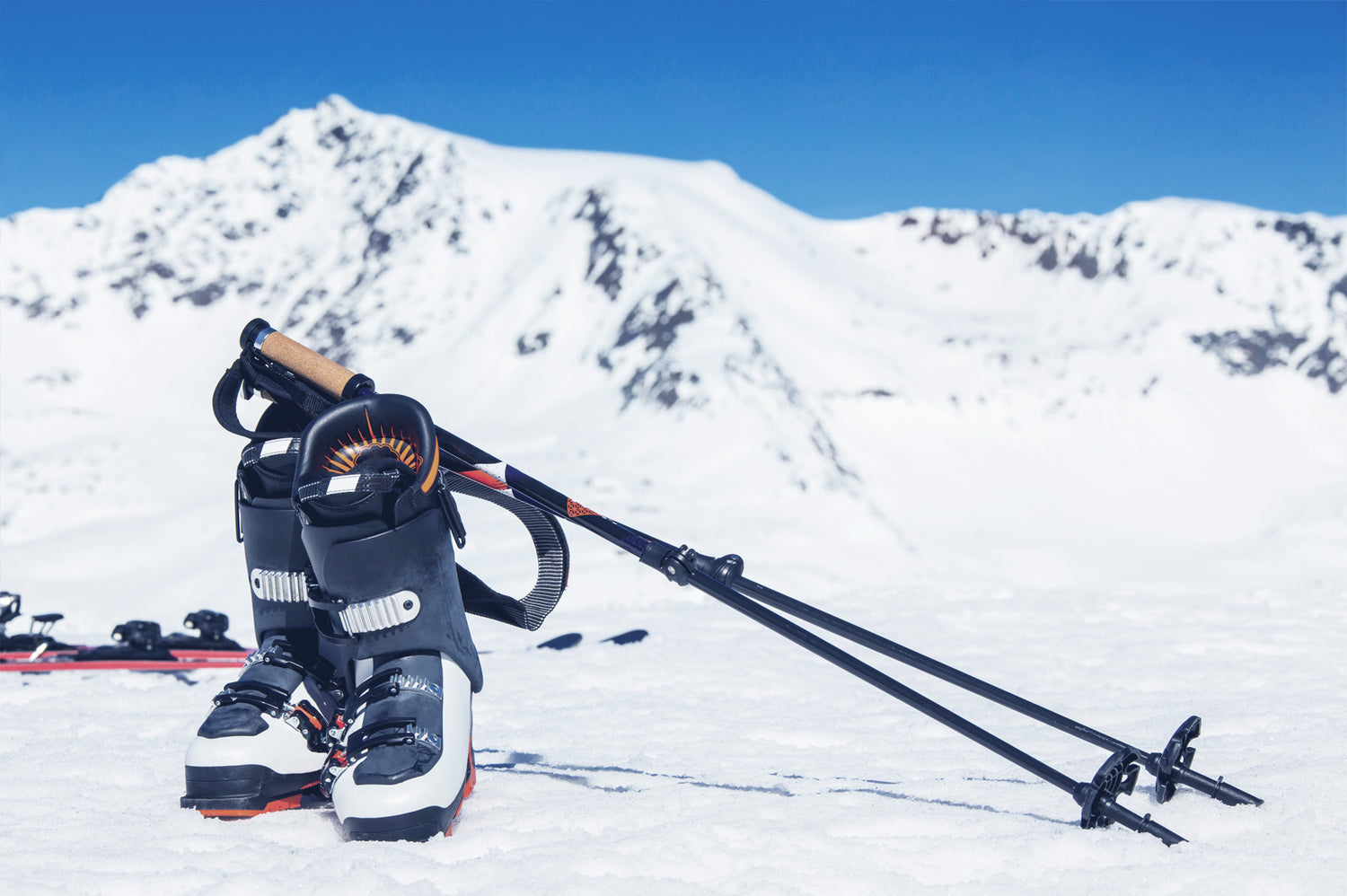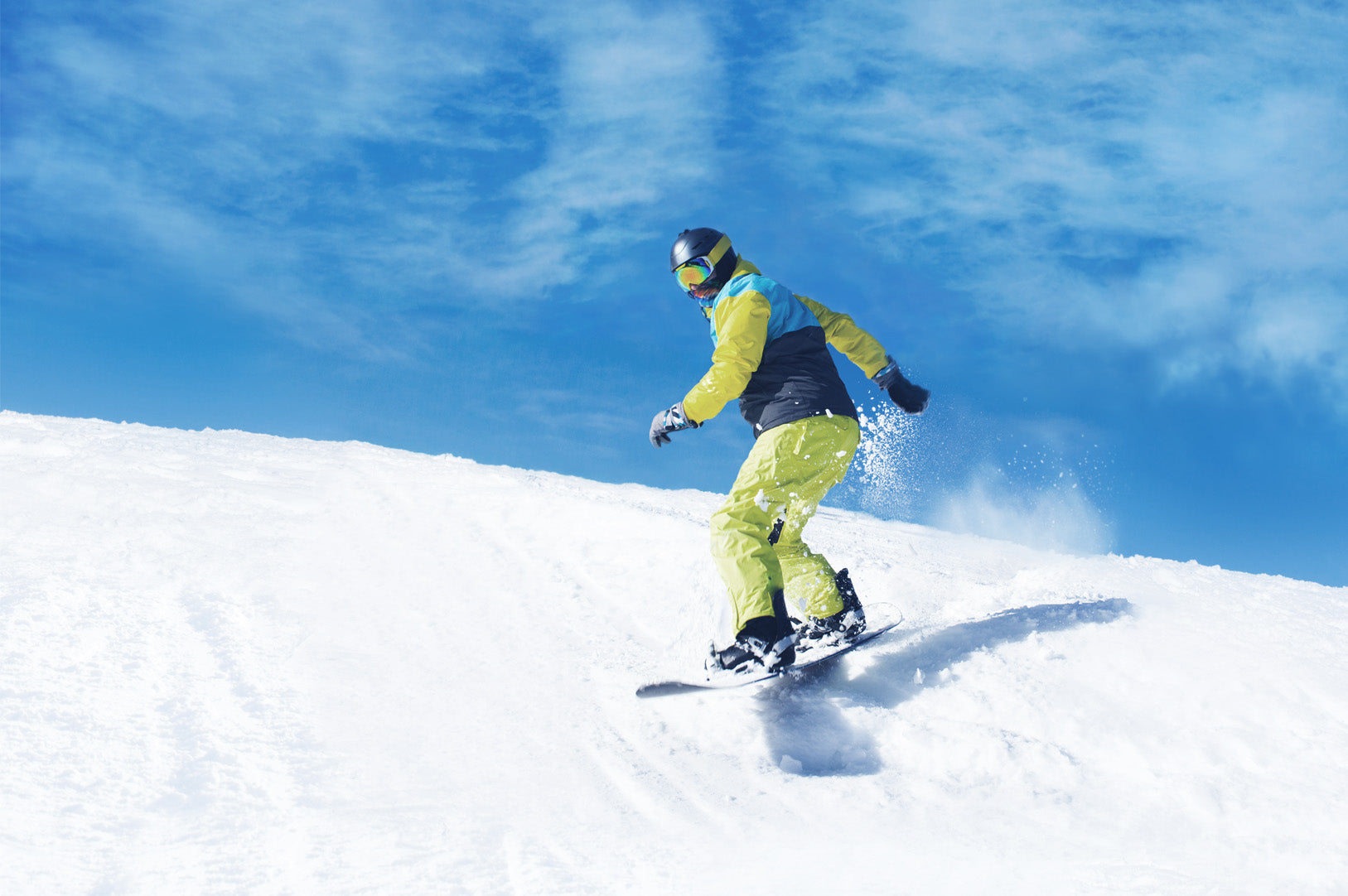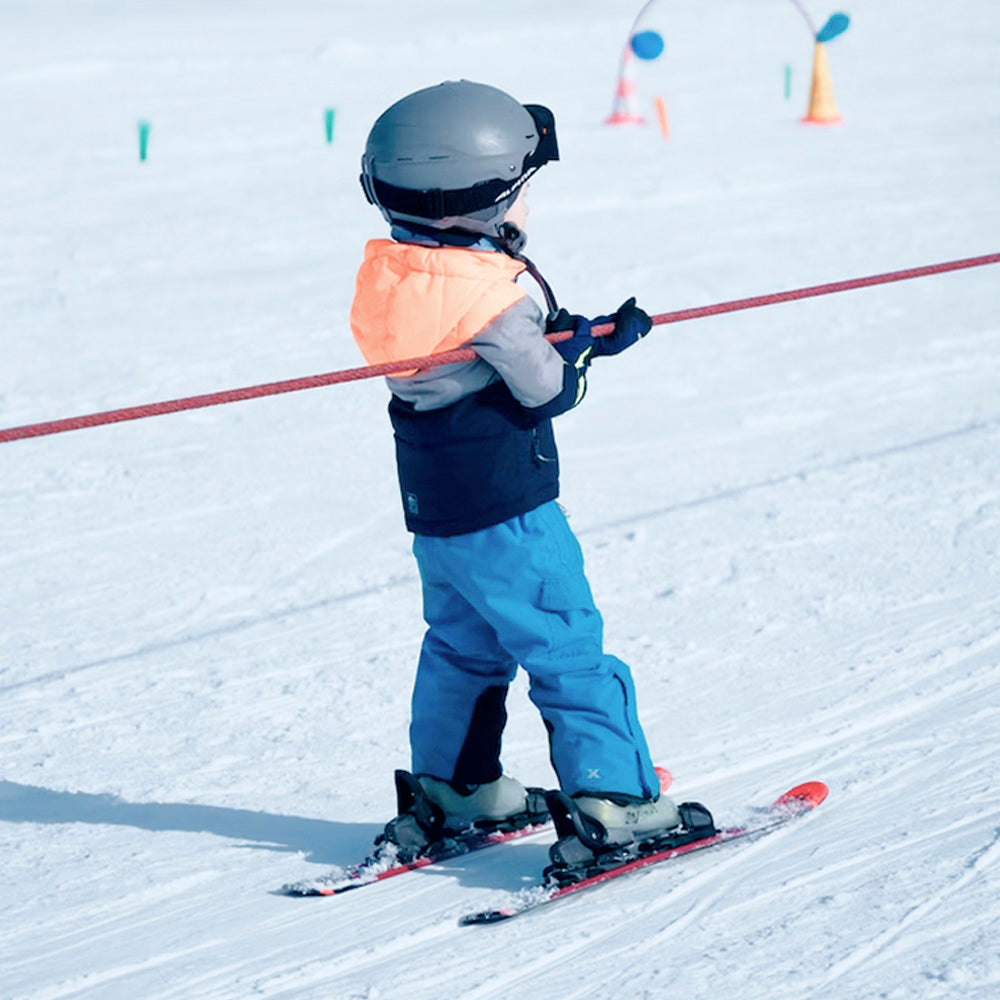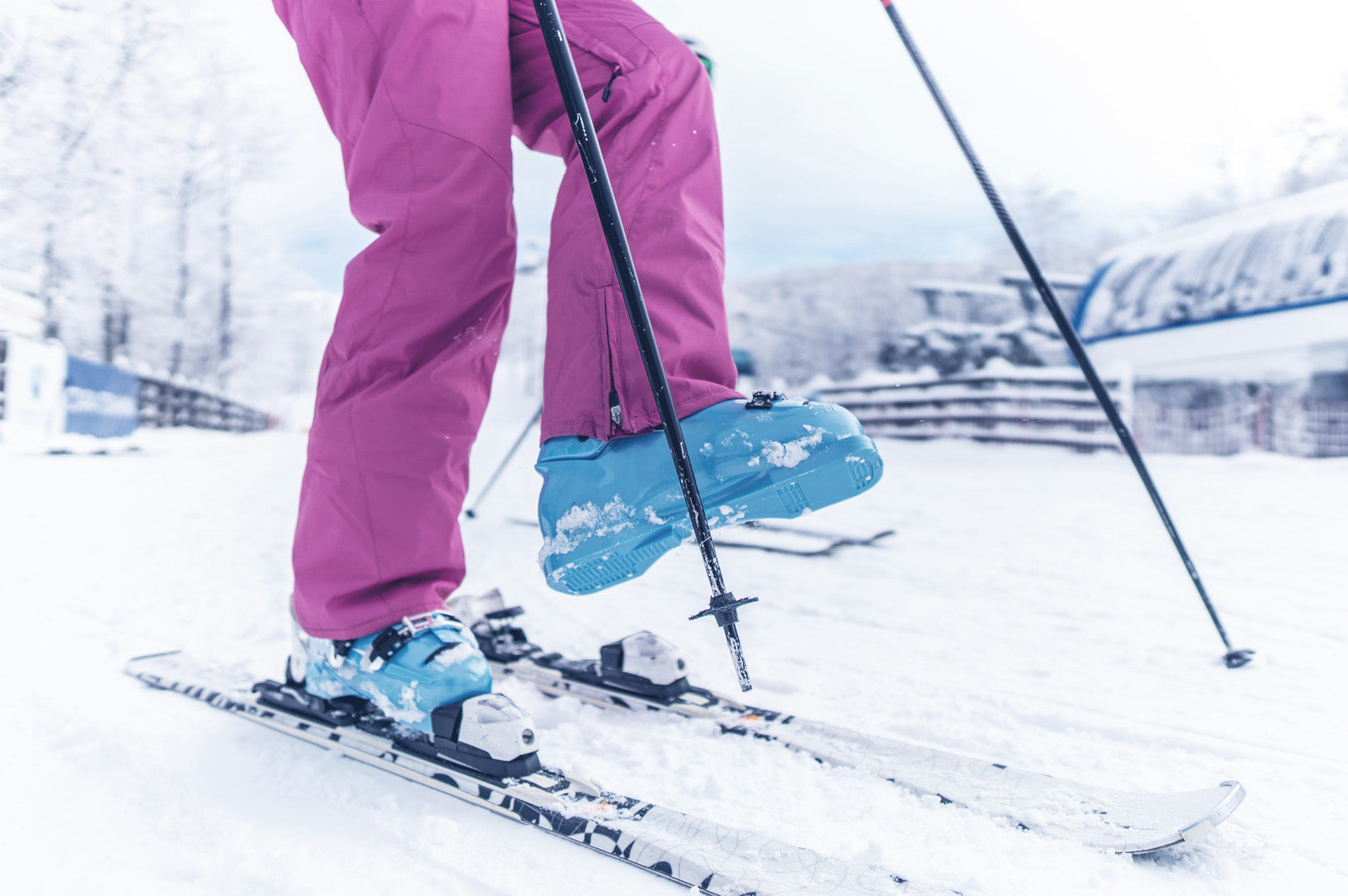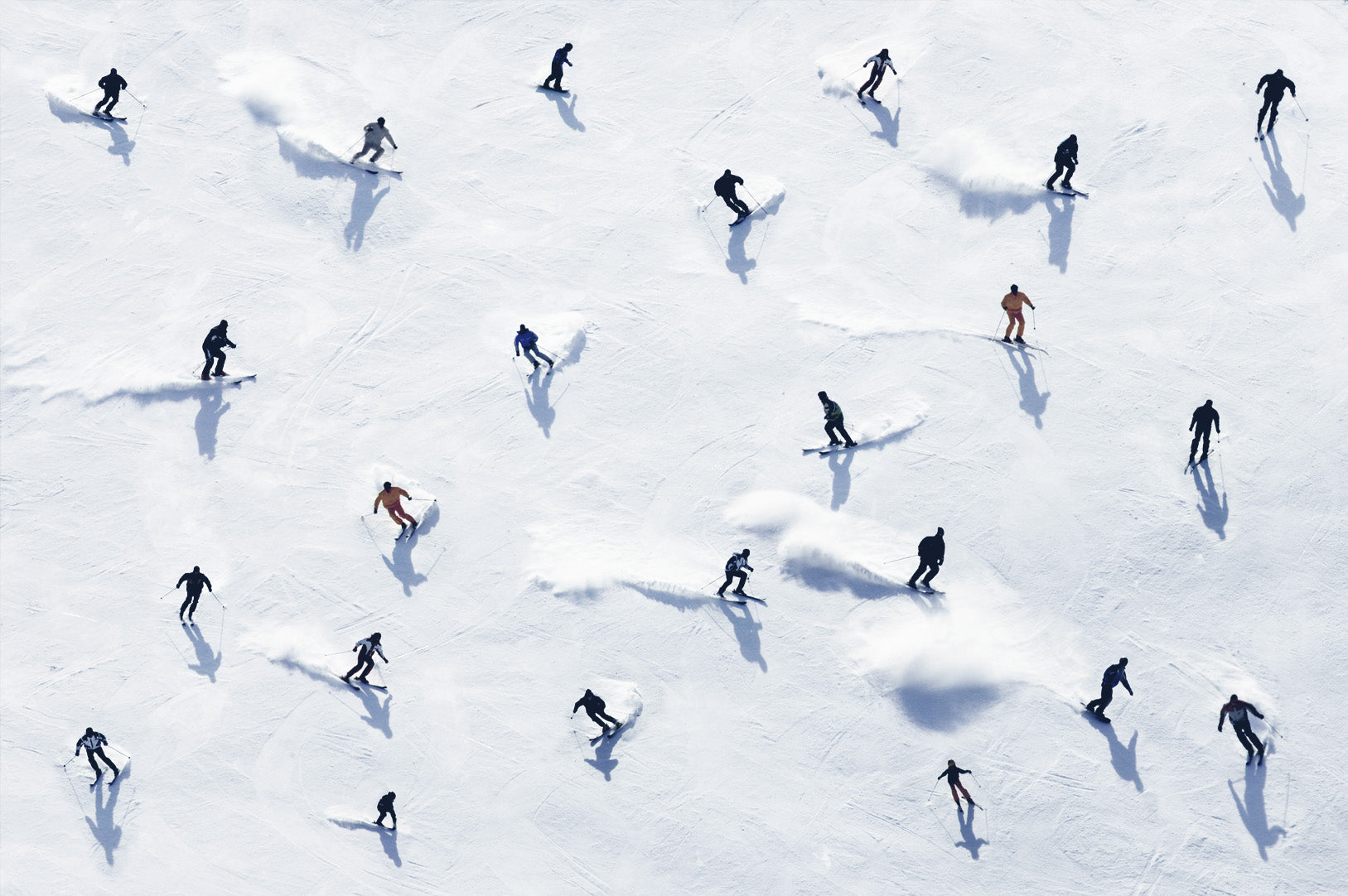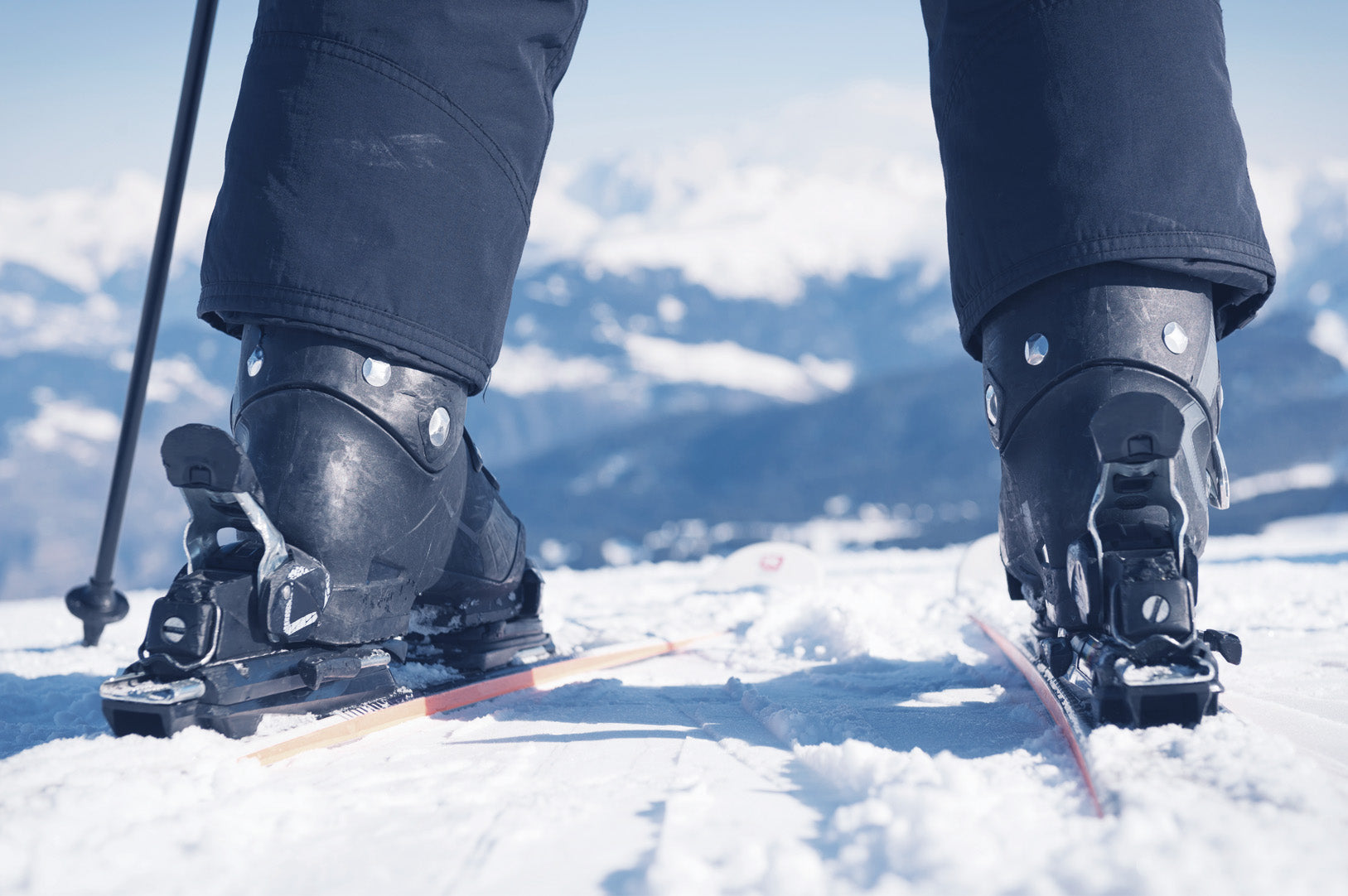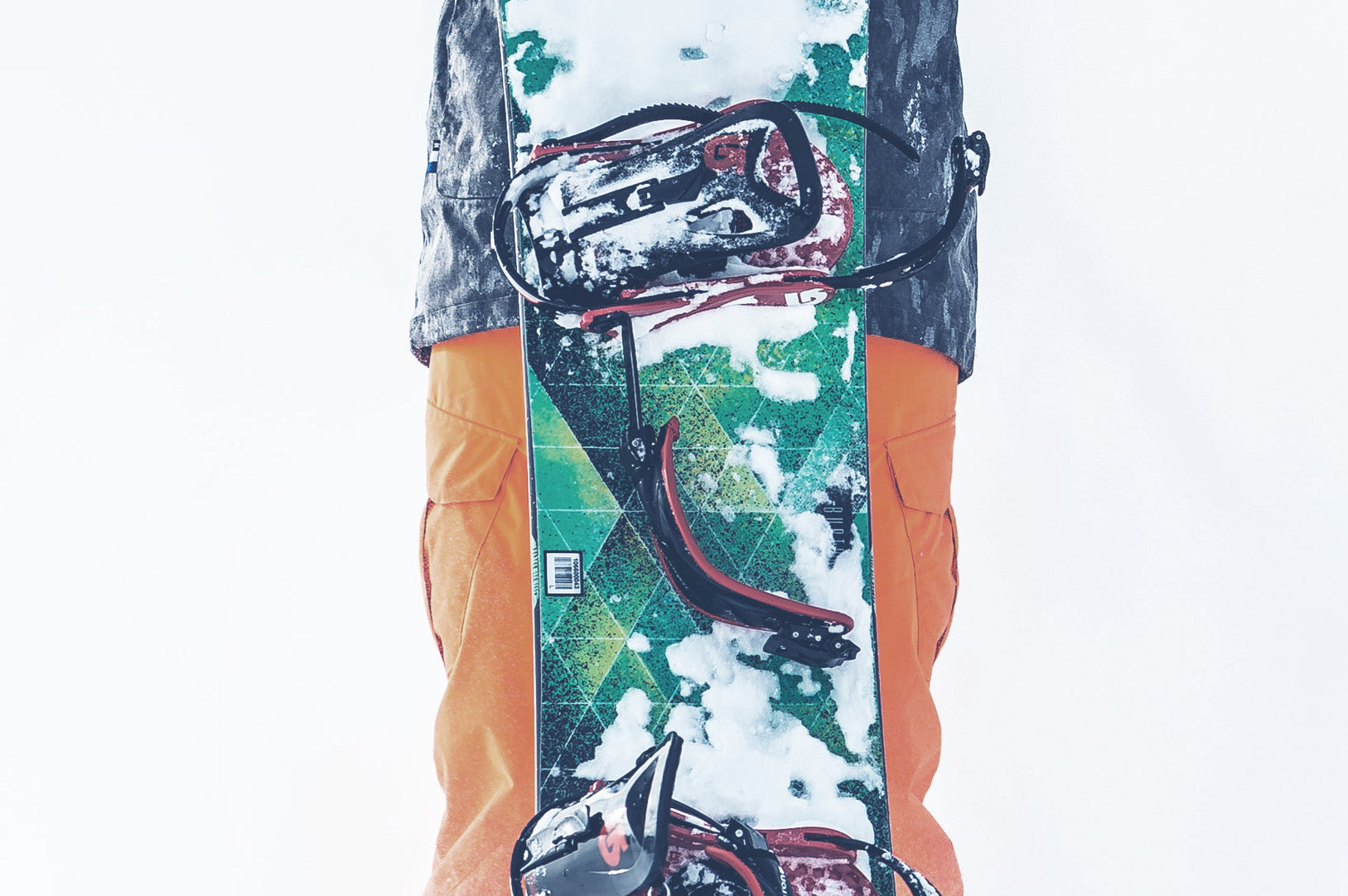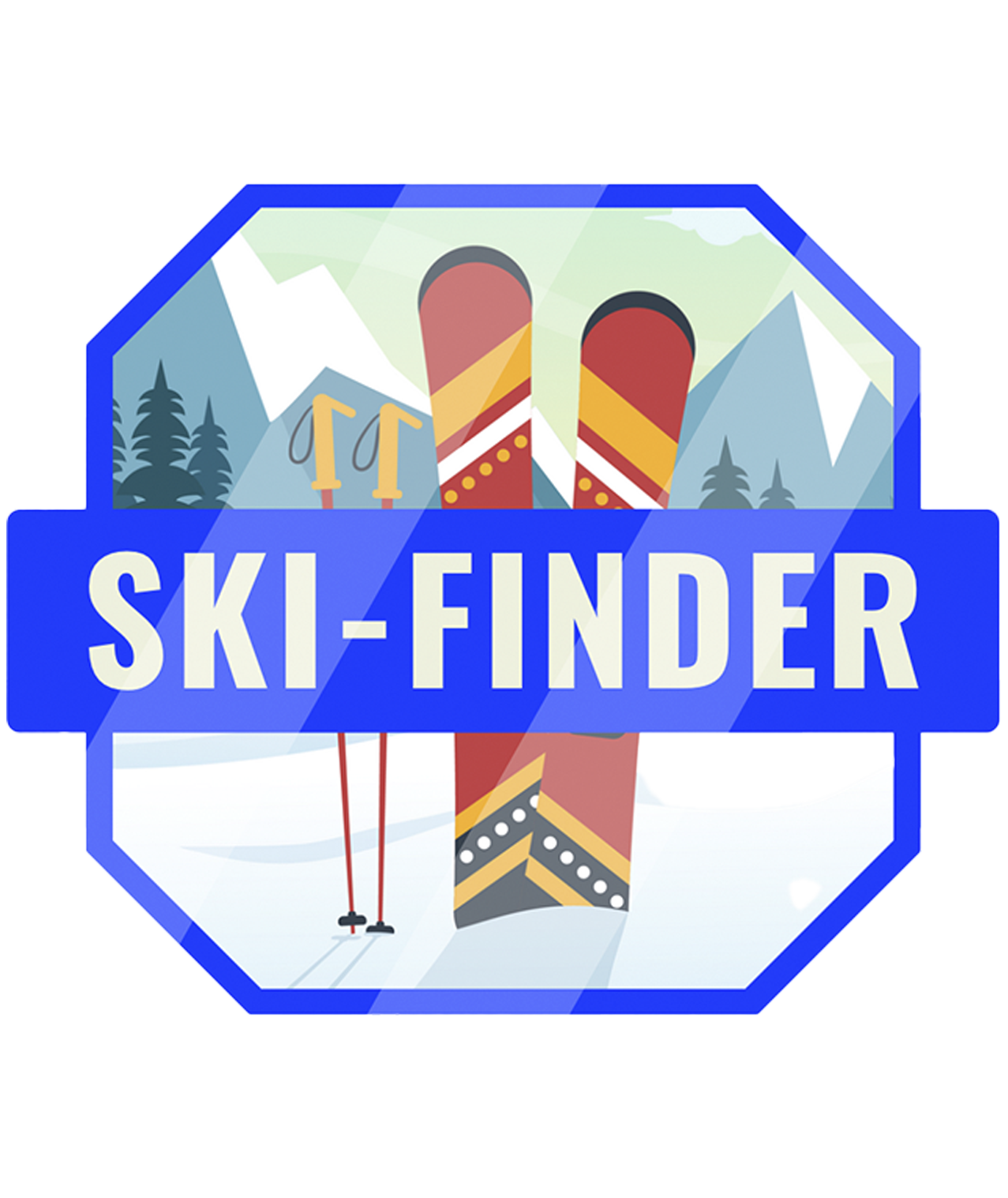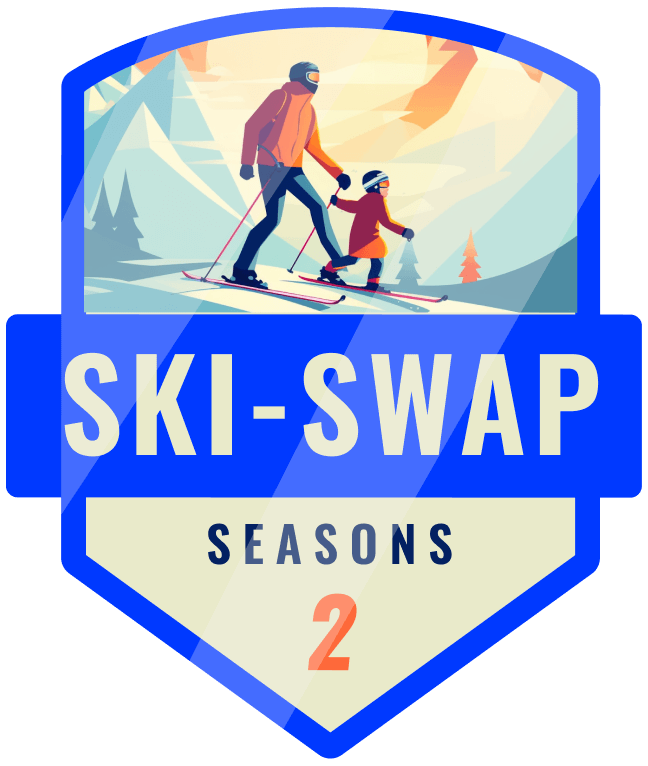Finding the right size for your equipment can be really difficult, especially when you're sitting at home in the living room and don't have the opportunity to have the equipment in hand. However, we have created this ultimate blog post where we have gathered all the knowledge you need to find the right length equipment. Take the test and get concrete answers, or read our detailed explanation below where we delve deeper into why you should choose the sizes you need.
Find your right size via our test!
Don't feel like reading a whole lot to figure out the size of your equipment? Fear not, we have created a simple and quick test that gives you precise answers on what size equipment you need!
Read our detailed size descriptions here
1. Adult skis
When calculating the length of your skis, it can be done in about 3 different ways. All methods give different results, depending on how much effort you want to put into finding the perfect size. The first method is the rule of thumb, which says you should find skis that reach from your chin to your eyes, depending on your level. If you are a Beginner, they should reach your chin, Skilled to the mouth, and Master to the eyes. However, there are too many uncertainties with this method, as the length of your skis depends on many other variables than just your height. This leads to method two, which is based on 6 different variables to give the most precise answer to your ideal ski length. This is also the method we use to find skis just for you! The last method is the most comprehensive but also the best. You only really know how long your skis should be when you have tested several different lengths in all kinds of weather and terrain. So if you have the opportunity to take 4-5 pairs of skis on vacation, we highly recommend this method, otherwise, you can see below how we most accurately calculate your ideal ski length!
How to calculate your ideal ski length
When we need to make a precise calculation of your ski length, there are 6 different variables we base it on. The relevant variables to look at are your Level, Type, Turn radius, Weight, Ambition level, and of course height. If you are not sure about your values, you can take our ski-finder test which gives you all the answers!
Level indicates how long a ski you will be able to control. The better your technique is on skis, the longer a ski you will be able to control and thus also be able to ski faster. On the other hand, if your technique is not quite optimal yet, you will want a shorter ski as it is easier to control. If you are at the Beginner level, you should subtract 20cm from your height, Skilled is minus 15cm, and finally, as a Master, you should subtract 10cm.
The type of ski you are looking for also affects the length, as a longer ski provides more lift on the snow. If you are looking for piste skis, you should not change the length, but if you are looking for an all-mountain ski, you should add 3cm for better lift in soft snow. For off-piste and twin-tip skis, you should add a full 6cm to the ski length for optimal lift.
Turn radius is only relevant to consider for piste skis and should not be included in the equation if you are looking for other types of skis. The turn radius indicates how easy the ski is to turn with. A low turn radius is designed for small turns, and it is therefore advantageous to choose a ski that is 3cm shorter. With a medium turn radius, which is a ski that can be used for all types of turns, you should not change the ski length. Finally, there is a large turn radius, which is designed for large fast turns with good speed. Here it is advantageous to choose a ski that is 3cm longer.
Weight also affects the length, as more weight often means you will be able to put more force into the turns and therefore want a longer ski. If you are thin compared to your height, it is advantageous to choose a ski that is 3cm shorter, as it will be easier to control this way. With normal weight, you should not change the length, and with a little extra weight, it is a good idea to choose a ski that is 3cm longer.
Ambition level is the last relevant variable to look at. Here it means whether you are looking for a ski that matches your overall level, type, weight, and height, or whether you still want a slightly shorter ski because you don't have ambitions to race ahead. If you are with children or your body is not quite what it used to be, it is a good idea to choose 'Very calm', which will give a 6cm shorter ski and thus make it much easier for you. If you think you want it a little below your optimal level, because you, for example, don't ski so wildly anymore or just want to ski at a more relaxed pace, you can advantageously choose 'A little calm' and get a 3cm shorter ski. If you are completely fresh and ready to go all out and challenge your current skiing, you should choose 'Corresponding level' and thus not change the ski length.
Finally, add your height to the total calculation, and you have your ideal ski length. With this length, you can create an interval of +/- 3cm, and then you know exactly what length of skis to look for. Take our size guide test if you don't want to calculate your values yourself.

To find the perfect skis for you, it's not just the length you should look for, but also the level, type, and radius. See our complete guide to choosing the right skis here!
Do you already know what skis to look for? Then you can see all our adult skis here!
2. Children's skis
Finding the length of children's skis is fortunately a lot easier than finding the length for adult skis. There is not much difference in children's skis, and therefore not many variables to consider. For children, it is important that the ski is low enough so that the child has the opportunity to develop as much as possible!
Children's skis should therefore be 30-20cm lower than your child. If it is the first time, or the child is very cautious, the skis should be about 30cm shorter. If the child, on the other hand, has skied several times and is starting to get a good grip on it, the skis should be about 25cm shorter. Finally, if the child is completely in control, you can choose skis about 20cm shorter. You can take our ski-finder test for children and get exactly which skis we have that fit your child!
If you already know what type of skis to look for, you can see all our children's and junior skis here!

3. Ski boots
Ski boots are always difficult to find the correct size for. This is simply because you cannot just rely on the size stated on the boot, as all models fit differently. So you might need size 26.5 in one model and size 27 in another model...
We have created a table below that can give you a good starting point for choosing boot size. However, we always recommend visiting our store and trying the different models as this gives the best result! If you cannot visit the store, you can measure your foot at home if you have access to a ruler or something similar. If you don't have access to a ruler, we have also added a table further down the page where you can see your converted boot size based on your regular shoes.
Measure your foot in CM
To measure your foot most easily at home, you should place your heel against a vertical wall. Then place your ruler or something similar next to your foot to see how far it is from the wall to your outermost toe. When measuring your foot, you should have the weight on the forefoot to get the best result.
Extra space in the boots is for children and, for example, adults who are looking for a boot that should be very comfortable, and you should therefore add 1.5cm to the foot size.
Regular is for you who are looking for a boot that fits well on the foot but is not so tight that it becomes uncomfortable to wear throughout the day. Here you should add 1cm to your foot size.
Very tight is for you who want the boot to fit very closely so that you have full control over the skis, and you should therefore only add 0.5cm to the foot size.
Once you have measured your foot and added the extra length, you have your boot size. You can see all our ski boots here!

For those who don't have a ruler
If you don't have access to a ruler, you can use the table below to find your boot size. However, since it is already very difficult to find the right boots without trying them, it is even more difficult to do so based on this table, as just because you wear a size 43 in EU shoes, it does not necessarily mean that it will be comparable to the size of the ski boots. However, if you have no other options, this is your best solution.
4. The length of your ski poles
The size of your ski poles depends on how tall you are and what you find comfortable for yourself. Ski poles are just ski poles, and they are made to help you as much as possible. That said, it's important that you like the length of the poles you buy, and most importantly, they feel comfortable to stand upright with.
However, we have still created a guide for those who are in doubt and can use it to estimate the length of the desired ski poles. When you stand with the poles upright with about a 90-degree angle at the elbows, it should feel comfortable for the shoulders. The poles should not be so long that you feel your shoulders being pulled up when you stand with the poles.

5. The length of your Snowboard
For calculating and determining the length of your snowboard, a different method is used than for skis. Here, the most important variables are the Type of board, your BMI, and finally your height. For snowboards, the level is not crucial for the length of your board. However, it is worth noting that you know best what length is right for you. If you are in doubt, using our table is a good guideline.
Calculate your ideal snowboard length
The first point we need to look at to find the length of your board is the type of board you are looking for.
Park board: If you want a park board, it is advantageous for it to be a bit shorter so you can swing around and jump on it more easily. Here we recommend minus 2 cm.
All mountain: The all-mountain board is for those who want to use the board on the entire mountain, whether it's in the fun park, on the piste, or off-piste. Here we recommend not adjusting the length.
Off-piste: An off-piste board should be a bit longer than normal, as length provides better lift in soft snow. Here we recommend plus 2 cm.
Weight is the next point you should consider regarding the length of the board. When we talk about weight, we mean more precisely BMI. This is because if you are light compared to your height, it is recommended to have a shorter board, as it will be easier to control. With a normal BMI, you should not change the length of the board, as it is designed for this. With a higher BMI, it is recommended to choose a board that is a bit longer, as you will have more weight/force to press down on the board.
Finally, in the formula, you should take your height and multiply it by 0.9. This is because you want a board that is 10% smaller than yourself as a starting point.
You can now add these numbers together, and you have a starting point. From your starting point, we recommend creating an interval with +/- 3 cm to the starting point. This is because a change of +/- 3 cm to the board will not make a significant difference in how you will ride the snowboard.

The rule of thumb
If you are still in doubt about the length of your snowboard, you can use the rule of thumb. It states that the snowboard should reach about your chin.
6. The size of your snowboard boots
When it comes to the length of your snowboard boots, the same principles apply as with ski boots. You can read this guide a little higher up at: 3. The size of your ski boots

